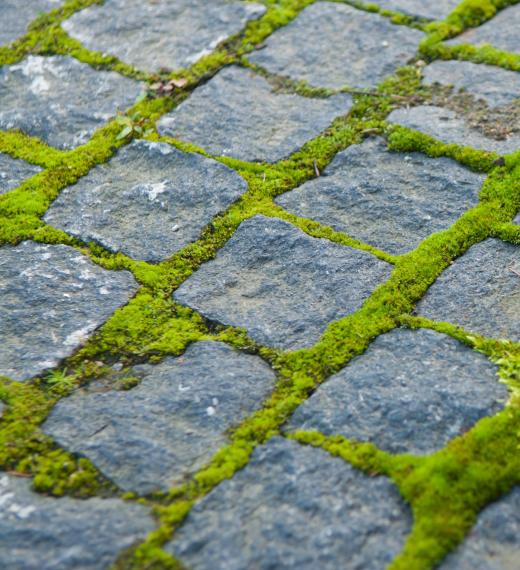A sett is a quarried rock, usually cut into the shape of a brick. Many believe the technique originated centuries ago with the Romans who used the specially shaped rocks, or setts, for road paving. The cut rock brickwork varies in size, color, and texture, depending on the type of rock used. Their use continued throughout England, Ireland, and other European countries, eventually arriving in the United States.
Quarries cut setts from sedimentary, igneous, and metamorphic rock. The types of rock derived from these deposits include sedimentary sandstone, igneous basalt and granite, and metamorphic marble and quartz. Quarry workers form the brick-shaped rocks by cutting stone with saws. Sett ranges from 2 to 12 inches (50 to 300 mm) in length and is 1 to 6 inches (50 to 150 mm) thick. Widths vary, and the stonecutters do create cube-shaped setts.

The texture of the sett varies naturally, and stonecutters can further modify stone surfaces with their tools. Setts with smooth, glass-like surfaces have usually been created by cutting the rock on all six sides with a saw. More natural looking edges occur when workers soften the sharp lines with a hammer. Picking gives the rocks a more pitted surface, and tumbling retains the natural surface texture while softening sharp edges.
The variations in rock color are natural and vary widely, depending on the particular stone formation. Quarries in Europe and China still cut setts for construction use. Countries from all over the world import these man-shaped stones.

Setts, being shaped by stonecutters, are different than cobblestone which are natural. Cobblestones generally have a rounder, smoother appearance and vary in shape and often originate in riverbeds or streams. People in southern England commonly refer to a sett as a Belgian block, and in Scotland, the cut rocks may be referred to as cassies or nidgers. Sett pavements comprise the Royal Mile and Coronation streets in England, and the Champs-Elysees in France.
In the United States, tourists find sett paving in the German Town section of Philadelphia and in the meatpacking and SoHo districts of New York. Many US streets constructed with trolley or streetcar tracks historically have sett paving. Many modern architectural and landscape features include sett stone patterns, including large cities with pedestrian-only shopping areas. Rectangular and square setts also grace many patios, paths, and driveways.
